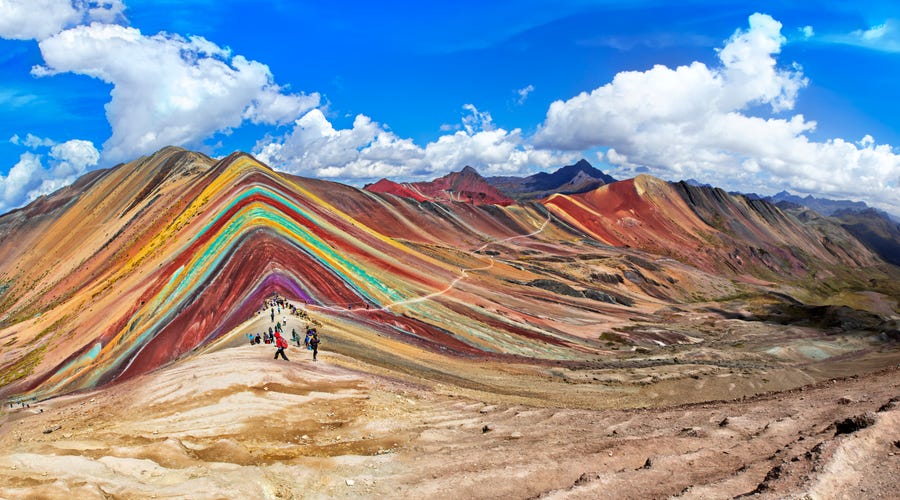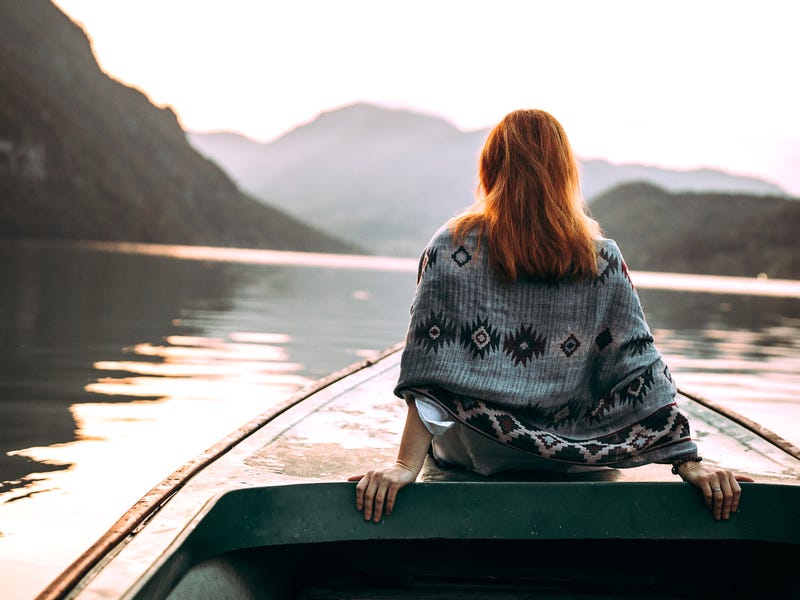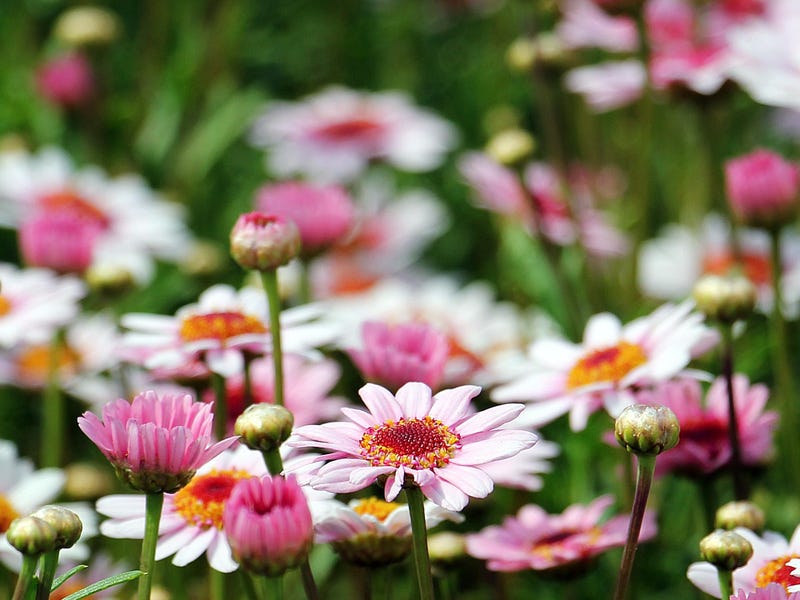
137 lovely landforms in Spanish from beaches to islands & bights
Author: Marco Monroy
Explore the world with our guide of 137 geographic landforms in Spanish.
If you love nature or simply enjoy a good hike, you’ll surely want to know how to say landforms in Spanish. From mountains to the sea, this guide will take you on a journey through all the most common (and even some you may not be familiar with!) land formations so you can talk about the world like a true cartographer.
Knowing landform vocabulary in Spanish will be incredibly helpful even if you’re not an outdoorsy person. You’ll be able to talk about anything from valleys to volcanoes, helping you describe places and events much more accurately.
Plus, there are plenty of popular idioms and phrases in Spanish that involve landforms, so you’ll be that much closer to understanding all the Spanish idioms!
Read on to learn how to say over 130 different landforms and geography in Spanish.
How do you say “landforms” and “water bodies” in Spanish
The first thing you’ll want to know is how to say “landforms” and “water bodies” in Spanish. While the translation for “water bodies” is pretty straightforward, you may find the translation for landforms pretty amusing: los accidentes geográficos. While this may sound a bit strange, the “accidents” part refers to how they were formed inadvertently by the elements! Let’s take a closer look:
| English | Spanish | IPA | Pronunciation |
|---|---|---|---|
| Landforms | Los accidentes geográficos | aksiˈðɛ̃ntes xeoˈɣɾafikos | ac-see-den-tess heh-oh-gra-fee-cos |
| Water bodies | Las masas de agua | ˈmasas̬ ðe ˈaɣwa | ma-sas deh ah-goo-ah |
The most common landforms and bodies of water in Spanish
Unless you’re a geographer, you probably haven’t heard of all the landforms and bodies of water in this article. After all, we’ve included over 130 different geographic terms, so you know exactly how to talk about landforms. So, if you’re dying to explore the world, keep reading to learn more about land and water geography in Spanish!
Coastal and oceanic landforms in Spanish
It’s hard not to picture a beautiful beach when you think of Spanish-speaking countries like Spain, Mexico, and the Dominican Republic. However, there are many different types of coastal and oceanic geography, so you can go beyond knowing only how to say beach in Spanish. Get ready to learn to make your vocabulary even more descriptive!

| English | Spanish | IPA | Pronunciation |
|---|---|---|---|
| Archipelago | Un archipiélago | aɾʧiˈpjelaɣo | ar-chee-pee-eh-la-go |
| Atoll | Un atolón | atoˈlõn | ah-toe-lon |
| Ayre | Un ayre | ˈai̯ɾe | ah-e-reh |
| Natural arch | Un arco natural | ˈaɾko natuˈɾal | ar-co na-too-ral |
| Barrier island | Una isla barrera | ˈis̬la βaˈrɛɾa | ees-la bah-reh-ra |
| Bay | Una bahía | βaˈia | bah-eh-ah |
| Beach | Una playa | ˈplaʝa | plah-ya |
| Raised beach | Una terraza costera | tɛˈrasa kosˈtɛɾa | teh-rah-za cos-teh-ra |
| Bight | Un ancón | ãnˈkõn | an-con |
| Blowhole | Un bufadero | bufaˈðɛɾo | boo-fa-deh-ro |
| Channel | Un canal natural | kaˈnal natuˈɾal | cah-nal nah-too-ral |
| Cape | Un cabo | ˈkaβo | cah-bo |
| Cliff | Un acantilado | akãntiˈlaðo | ah-can-tee-la-doe |
| Coast | Una costa | ˈkosta | cos-ta |
| Continental shelf | La plataforma continental | plataˈfoɾma kõntinɛ̃nˈtal | pla-tah-for-ma con-tee-nen-tal |
| Coral reef | Un arrecife de coral | areˈsife ðe koˈɾal | ah-reh-see-feh deh co-ral |
| Cove | Una ensenada | ɛ̃nseˈnaða | en-seh-na-da |
| Dune | Una duna | ˈðuna | doo-na |
| Estuary | Un estuario | ɛsˈtwaɾjo | es-too-ah-ree-oh |
| Gulf | Un golfo | ˈɡolfo | gol-fo |
| Inlet | Un grao | ˈɡɾao | grah-oh |
| Island | Una isla | ˈis̬la | ees-la |
| Islet | Un islote | is̬ˈlote | ees-lo-teh |
| Isthmus | Un istmo | ˈistmo | ees-tmoh |
| Lagoon | Una laguna | laˈɣuna | lah-goo-na |
| Mid-ocean ridge | Una dorsal mediooceánica | ðoɾˈsal meðjooseˈanika | dor-sal meh-dee-oh-oh-seh-ah-nee-ca |
| Oceanic basin | Una cuenca oceánica | ˈkwɛ̃nka oseˈanika | coo-en-cah oh-seh-ah-nee-ca |
| Oceanic trench | Una fosa oceánica | ˈfosa oseˈanika | foh-sa oh-seh-ah-nee-cah |
| Peninsula | Una península | peˈnĩnsula | peh-neen-soo-la |
| River delta | Un delta | ˈdɛlta | del-ta |
| Salt marsh | Una marisma salina | maˈɾis̬ma saˈlina | mar-is-ma sa-lee-na |
| Sea cave | Una cueva marina | ˈkweβa maˈɾina | coo-eh-va ma-ree-na |
| Seamount | Un monte submarino | ˈmõnte suβmaˈɾino | mon-teh soob-ma-ree-no |
| Shoal | Un banco de arena | ˈbãnko ðe aˈɾena | ban-co deh ah-reh-na |
| Shore | Una ribera | riˈβɛɾa | ree-beh-ra |
| Sound | Una sonda | ˈsõnda | son-da |
| Sandpit | Un cordón litoral | koɾˈðõn litoˈɾal | cor-don lee-toe-ral |
| Strait | Un estrecho | ɛsˈtɾeʧo | ehs-treh-cho |
| Strandflat | Un strandflat | sˈtɾãnd | strand-flat |
| Stack | Un farallón | faɾaˈʝõn | fa-ra-yon |
| Tidal marsh | Una marisma | maˈɾis̬ma | ma-rees-ma |
| Tide pool | Una poza de marea | ˈposa ðe maˈɾea | po-za deh ma-reh-ah |
| Volcanic arc | Un arco volcánico | ˈaɾko βolˈkaniko | ar-co vol-ca-nee-co |
| Wave-cut platform | Una rasa mareal | ˈrasa maɾeˈal | ra-sa mah-reh-al |
Erosion landforms in Spanish
Erosion landforms are those that were formed by “wear and tear” on the earth, usually by air or water. These are some of the most important landform types to learn, as erosion landforms include major formations like canyons, valleys, and caves.

| English | Spanish | IPA | Pronunciation |
|---|---|---|---|
| Badlands | Las tierras baldías | ˈtjɛras̬ βalˈdias | tee-eh-ras bal-dee-as |
| Butte | Un butte | ˈbut̚te | boo-teh |
| Canyon | Un cañón | kaˈɲõn | ca-nyon |
| Cave | Una cueva | ˈkweβa | coo-eh-va |
| Cuesta | Una cuesta | ˈkwɛsta | coo-es-tah |
| Fjord | El fiordo | ˈfjoɾðo | fee-or-do |
| Gully | Un barranco | baˈrãnko | ba-rahn-co |
| Mesa | Una mesa | ˈmesa | meh-sa |
| Potrero | Un potrero | poˈtɾɛɾo | po-treh-ro |
| Ridge | Una cresta | ˈkɾɛsta | cres-tah |
| Valley | Un valle | ˈbaʝe | va-yeh |
Fluvial landforms
Fluvial landforms are those formed by running water. After reviewing the following table, you will be able to say river in Spanish as well as stream, rapids, and other helpful formations made by water.

| English | Spanish | IPA | Pronunciation |
|---|---|---|---|
| Bayou | Un bayou | baˈʝou̯ | bah-you |
| Bench | Un plano | ˈplano | plah-no |
| Confluence | Una confluencia fluvial | kõmˈflwɛ̃nsja fluˈβjal | con-floo-ehn-see-ah |
| Drainage basin | Una cuenca hidrográfica | ˈkwɛ̃nka i̯ðɾoˈɣɾafika | coo-en-ca ee-dro-grah-fee-ca |
| Floodplain | Un terreno inundable | tɛˈreno i̯nũnˈdaβle | teh-reh-no een-oon-da-bleh |
| Levee | Un dique | ˈdike | dee-keh |
| Marsh | Una ciénaga | ˈsjenaɣa | see-eh-neh-gah |
| Meander | Un meandro | meˈãndɾo | meh-an-dro |
| Rapids | Un rápido | ˈrapiðo | rah-pee-do |
| River | Un río | ˈrio | ree-oh |
| River island | Una isla fluvial | ˈis̬la fluˈβjal | ees-la floo-vee-al |
| Spring | Un manantial | manãnˈtjal | ma-nan-tee-al |
| Strait | Un estrecho | ɛsˈtɾeʧo | es-treh-cho |
| Stream | Un riachuelo | rjaˈʧwelo | ree-ah-choo-eh-lo |
| Stream pool | Una poza | ˈposa | po-za |
| Swamp | Un pantano | pãnˈtano | pan-tah-no |
| Wash | Un arroyo | aˈroʝo | ah-ro-yo |
| Waterfall | Una cascada | kasˈkaða | cas-ca-da |
Impact landforms in Spanish
Impact landforms are some of the most exciting types of landforms as they all share one thing in common: they were formed by aliens. Well, not actual aliens, but extraterrestrials. Extraterrestrial matter, if you will.
| English | Spanish | IPA | Pronunciation |
|---|---|---|---|
| Crater | Un cráter | ˈkɾatɛɾ | cra-ter |
| Impact crater | Un cráter de impacto | ˈkɾatɛɾ ðe ĩ̯mˈpak̚to | cra-ter deh eem-pac-toe |
| Complex crater | Un cráter complejo | ˈkɾatɛɾ kõmˈplexo | cra-tehr com-pleh-ho |
| Simple crater | Un cráter simple | ˈkɾatɛɾ ˈsĩmple | cra-tehr seem-pleh |
| Impact crater lake | Un lago de cráter | ˈlaɣo ðe ˈkɾatɛɾ | la-go deh cra-tehr |
| Central peak crater | Un cráter de pico central | ˈkɾatɛɾ ðe ˈpiko sɛ̃nˈtɾal | cra-tehr deh pee-co sen-tral |
Mountains and glacial landforms in Spanish
If you love a good hike, then you’re undoubtedly looking forward to learning how to say different types of mountains in Spanish. You’ll also want to explore the stunning glaciers in the Southern Cone, as the national parks in Patagonia will surely leave you breathless!
| English | Spanish | IPA | Pronunciation |
|---|---|---|---|
| Crevasse | Una crevasse | kɾeˈβasse | creh-vas |
| Cirque | Un glaciar de circo | ɡlaˈsjaɾ ðe ˈsiɾko | gla-see-are deh seer-co |
| Glacier | Un glaciar | ɡlaˈsjaɾ | glah-see-are |
| Glacier cave | Una cueva glaciar | ˈkweβa ɣlaˈsjaɾ | coo-eh-va glah-see-are |
| Highland | Un altiplano | altip̚ˈlano | al-tee-plah-no |
| Hill | Un cerro | ˈsɛro | seh-ro |
| Inselberg | Un monte isla | ˈmõnte ˈis̬la | mon-teh ees-la |
| Moulin | Un molino glaciar | moˈlino ɣlaˈsjaɾ | mo-lee-no glah-see-are |
| Mountain | Una montaña | mõnˈtaɲa | mon-tah-nyah |
| Mountain pass | Un paso de montaña | ˈpaso ðe mõnˈtaɲa | pah-so deh mon-tah-nyah |
| Nunatak | Un nunatak | nunaˈtak | noon-ah-tack |
| Pyramidal peak | Un pico piramidal | ˈpiko piɾamiˈðal | pee-co pee-ra-me-dal |
| Summit | Una cima | ˈsima | see-ma |
Volcanic landforms in Spanish
You may think of Hawai’i and its stunning fruits when you think of volcanic landforms, but did you know that most of Latin America is a highly volcanic region? In fact, Chile is the country with the most geological activity in the world, second only to Indonesia. With over 2,000 volcanoes in Chile alone, you’ll surely find some volcanic vocabulary in Spanish very helpful.

| English | Spanish | IPA | Pronunciation |
|---|---|---|---|
| Caldera | Una caldera volcánica | kalˈdɛɾa βolˈkanika | cal-deh-ra vol-cah-nee-ca |
| Cinder cone | Un cono de escoria | ˈkono ðɛ ɛsˈkoɾja | co-no deh es-coh-ree-ah |
| Complex volcano | Un volcán complejo | bolˈkãn kõmˈplexo | vol-can com-pleh-ho |
| Lava | La lava | ˈlaβa | la-va |
| Lava dome | Un domo de lava | ˈdomo ðe ˈlaβa | doh-mo deh la-va |
| Volcano | Un volcán | bolˈkãn | vol-can |
| Cryovolcano | Un criovolcán | kɾjoβolˈkãn | cree-oh-vol-can |
| Diatreme | Un diatrema | djaˈtɾema | dee-ah-teh-ma |
| Dike | Un dique | ˈdike | dee-keh |
| Fissure vent | Una fisura volcánica | fiˈsuɾa βolˈkanika | fee-soo-ra vol-cah-nee-ca |
| Guyot | Un guyot | ɡuˈʝot | goo-yot |
| Hornito | Un hornito volcánico | oɾˈnito βolˈkaniko | or-nee-toe vol-cah-nee-coh |
| Kīpuka | Un kipuka | kiˈpuka | kee-poo-kah |
| Lava Lake | Un lago de lava | ˈlaɣo ðe ˈlaβa | la-go deh la-va |
| Lava tube | Un tubo de lava | ˈtuβo ðe ˈlaβa | too-bo deh la-va |
| Maar | Un maar | maˈaɾ | mar |
| Pit crater | Un cráter de subsidencia | ˈkɾatɛɾ ðe suβsiˈðɛ̃nsja | crah-ter deh soob-see-dee-ehn-see-ah |
| Resurgent dome | Un domo resurgente | ˈdomo resuɾˈxɛ̃nte | doh-mo reh-soor-hen-teh |
| Shield volcano | Un volcán en escudo | bolˈkan ɛn ɛsˈkuðo | vol-can ehn es-coo-doe |
| Stratovolcano | Un estratovolcán | ɛstɾatoβolˈkãn | es-tra-toe vol-cahn |
| Somma volcano | Un volcán somma | bolˈkãn ˈsõmma | vol-cahn soh-ma |
| Volcanic cone | Un cono volcánico | ˈkono βolˈkaniko | coe-no vol-cahn-e-co |
| Submarine volcano | Un volcán submarino | bolˈkãn suβmaˈɾino | vol-cahn soob-ma-ree-no |
| Supervolcano | Un supervolcán | supɛɾβolˈkãn | soo-per-vol-cahn |
| Volcanic crater | Un cráter volcánico | ˈkɾatɛɾ βolˈkaniko | cra-ter vol-ca-nee-co |
| Volcanic field | Un campo volcánico | ˈkãmpo βolˈkaniko | cam-po vol-cah-nee-coe |
| High island | Una isla volcánica | ˈis̬la βolˈkanika | ees-la vol-ca-nee-cah |
| Volcanic plug | Un tapón volcánico | taˈpõm bolˈkaniko | ta-pon vol-ca-nee-co |
Bodies of water in Spanish
Last but not least, we have bodies of water. With so many fun activities to do on a lake, ocean, or even hot spring, you surely already have a favorite body of water that you’re dying to learn! Here are some of the most common bodies of water in Spanish for you.

| English | Spanish | IPA | Pronunciation |
|---|---|---|---|
| Bog | Una turbera | tuɾˈβɛɾa | toor-beh-ra |
| Canal | Un canal | kaˈnal | ca-nal |
| Dam | Una presa | ˈpɾesa | preh-sa |
| Depresion | Una depresión | ðepɾeˈsjõn | deh-preh-see-on |
| Harbor | Un puerto | ˈpwɛɾto | poo-air-toe |
| Hot spring | Unas aguas termales | ˈaɣwas tɛɾˈmales | ah-goo-as ter-ma-les |
| Lake | Un lago | ˈlaɣo | la-go |
| Lagoon | Una laguna | laˈɣuna | la-goo-nah |
| Mangrove | Un manglar | mãnˈɡlaɾ | man-glar |
| Ocean | Un océano | oˈseano | oh-seh-ah-no |
| Pond | Un estanque | ɛsˈtãnke | es-tan-keh |
| Puddle | Un charco | ˈʧaɾko | char-co |
| Reservoir | Un embalse | ɛ̃mˈbalse | em-bal-seh |
| Sea | Un mar | ˈmaɾ | mar |
| Sinkhole | Un cenote | seˈnote | seh-noh-teh |
| Wetlands | Un humedal | umeˈðal | ooh-meh-dal |
Phrases or idioms that contain landforms in Spanish
If you’ve been studying Spanish for a while, you probably already know that Spanish speakers love using idioms and phrases in everyday speech. If you’ve just mastered well over a hundred various types of land and water geography words, why not learn a few idioms that include some of your shiny new vocab?
| English | Spanish | IPA | Pronunciation | Meaning |
|---|---|---|---|---|
| To cry a sea of tears. | Llorar un mar de lágrimas. | ɟʝoˈɾaɾ ũm ˈmaɾ ðe ˈlaɣɾimas | yo-rar oon mar deh la-gree-mas | To cry a river. |
| Faith can move mountains. | La fé puede mover montañas. | la ˈfe ˈpweðe moˈβɛɾ mõnˈtaɲas | la feh poo-eh-deh mo-ver mon-ta-nyas | Faith is so strong it could move mountains. |
| If the mountain won’t come to Mahoma, then Mahoma will go to the mountain. | Si la montaña no va a Mahoma, Mahoma va a la montaña. | si la mõnˈtaɲa ˈno ˈβa a maˈoma | maˈoma ˈβa a la mõnˈtaɲa | see la mon-tah-nyah no va ah ma-oh-ma ma-oh-ma va ah la mon-tah-nyah | If you’ve been waiting for someone who hasn’t come, it’s best to go out and look for them instead. |
| If the river makes noise, it means it’s carrying water. | Si el río suena, es que agua lleva. | sj ɛl ˈrio ˈswena | ˈɛs ˈke ˈaɣwa ˈʝeβa | see elle ree-oh soo-eh-na es keh ah-goo-ah yeh-va | Where there's smoke, there’s a fire. |
| Treat the mountain like your girlfriend: trust her, but don’t trust her. | A la montaña, como a la novia, con confianza, pero sin confianzas. | a la mõnˈtaɲa | ˈkomo a la ˈnoβja | kõn kõmˈfjãnsa | ˈpɛɾo sĩn kõmˈfjãnsas | ah la mon-tah-nyah co-mo ah la no-vee-ah con con-fee-ahn-za peh-ro seen con-fee-ahn-za | You have to always be careful when hiking on a mountain. |
| There is no sea man who couldn’t drown. | No existe hombre de mar que no se pueda ahogar. | ˈno ɛkˈsiste ˈõmbɾe ðe ˈmaɾ ˈke ˈno se ˈpweða aoˈɣaɾ | no ex-ees-teh om-breh deh mar keh no seh poo-eh-da ah-oh-gar | Even the most experienced sea men could drown. |
| Who sows wind reaps tempests. | Quien siembra vientos, recoge tempestades. | ˈkjɛ̃n ˈsjɛ̃mbɾa ˈβjɛ̃ntos | reˈkoxe tɛ̃mpɛsˈtaðes | key-ehn see-em-bra vee-ehn-tos, reh-co-heh tem-pes-ta-dess | You reap what you sow. |
Continue working on your Spanish like erosion on a valley
You know what they say, “In nature, nothing is perfect and everything is perfect.” Even if the Spanish translation for landforms suggests that they’re accidents, who could say that the stunning mountains of Chile, the forceful rapids of Costa Rica, or the serene cenotes of Mexico are anything but perfect?
Think of nature anytime you worry about your Spanish not being perfect. Imperfection isn’t a sign of failure but rather a sign of time and effort. So, don’t let your imperfections in Spanish keep you from practicing. Just keep going at it, and—much like the wind eroding away at a valley–you’ll notice drastic changes after repeated efforts.
We hope you enjoyed this blog! If you did, make sure to check out the rest of our awesome Spanish study resources to keep improving. We publish new (and free!) content all the time, so make sure to bookmark our page and check back for more!


